'I Choose To Stay': The Holdout At Hong Kong Campus Siege
In the final days of a police siege at Hong Kong's Polytechnic University, a lone protester stalked the darkened corridors, determined to outlast the authorities waiting to arrest him.
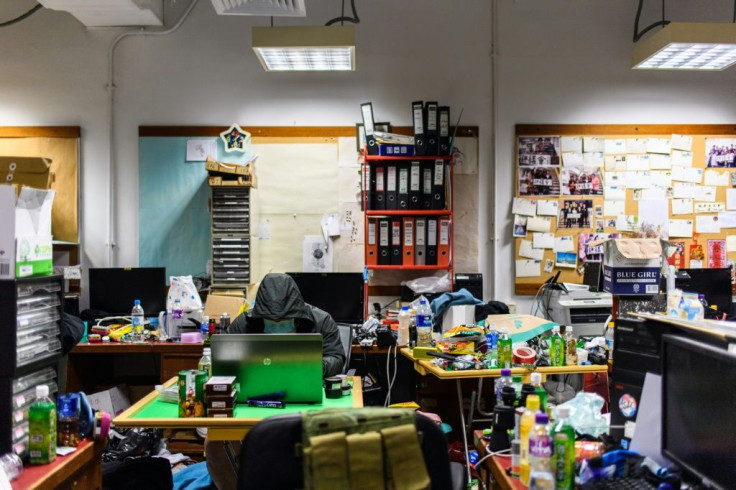
The man, who asked only to be identified as Michael, was among the final few dozen democracy protesters who barricaded themselves inside a campus where hardcore activists waged running battles using Molotov cocktails and even bows and arrows to keep back police.
Over the course of the extraordinary nearly two-week siege, protesters staged daring escapes, abseiling down ropes to waiting vehicles or seeking exits through the sewers.

But Michael was determined to stay, adamant that he had committed no crime and had every right to remain on campus.
"I have had many chances and opportunities to leave, but I choose to stay," he told AFP in the final days of the siege, the corridors of a once bustling campus now deserted and covered in graffiti.
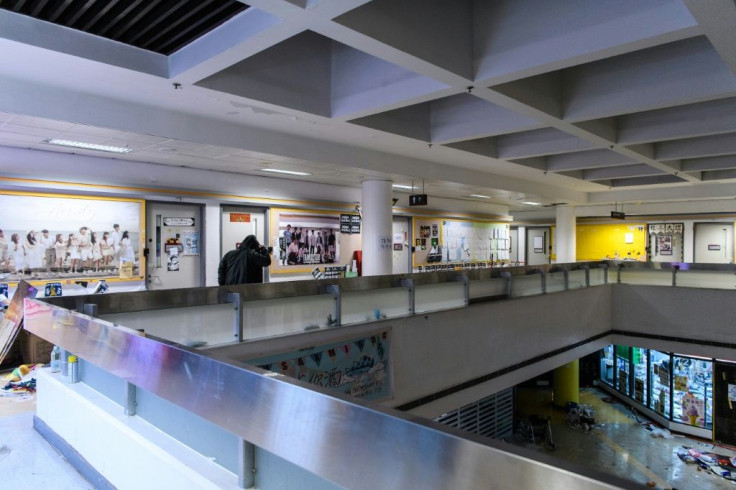
"We have done nothing wrong," he added.
Clashes at the university known as PolyU broke out on November 17, with protesters wielding petrol bombs and bows and arrows in their battles with police.
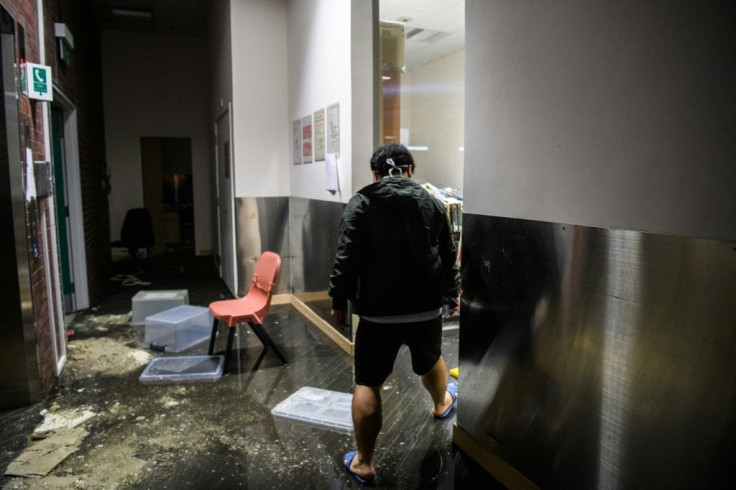
It was one of the most violent confrontations in nearly six months of protests, and it settled into a tense standoff, with police surrounding the complex and arresting anyone who emerged.
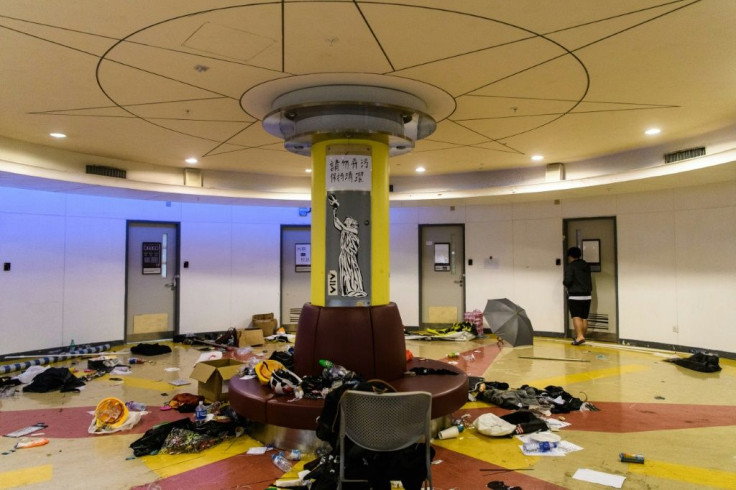
Conditions inside the school once known for its relaxed, party-fond student body quickly deteriorated, with vending machines looted for food and a foul odour wafting from canteens and kitchens where cockroaches rooted through rotting leftovers.
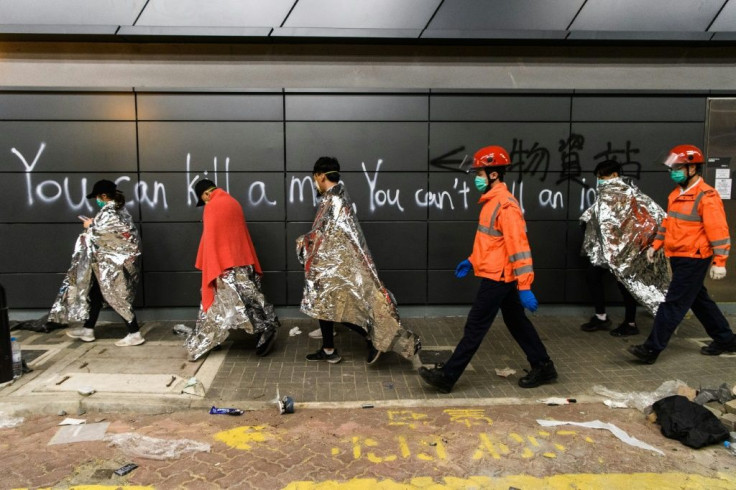
Michael took up residence in a meeting room strewn with cans of food, bottles and other detritus.
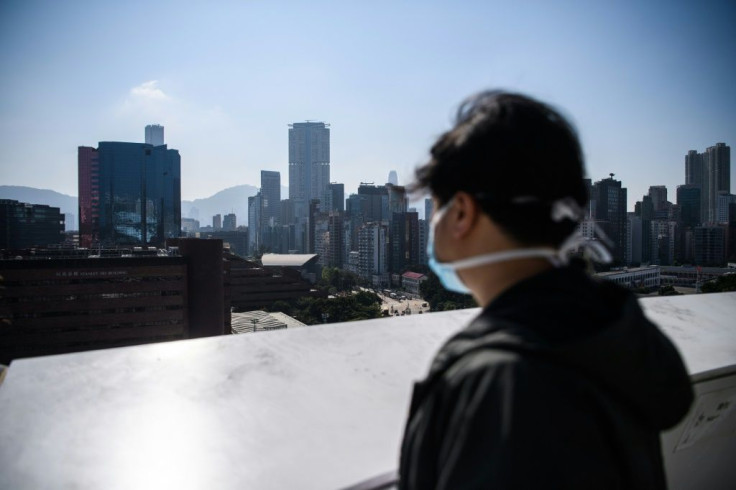
It resembled the home of a hoarder, but he didn't seem to notice as he sat at a small desk, his sweater hood pulled up over his head, sipping from a bottle of purloined red wine.
Surviving in the increasingly difficult circumstances on campus proved a serious challenge and every day he tried to avoid the search teams who were sent in to find holdouts.
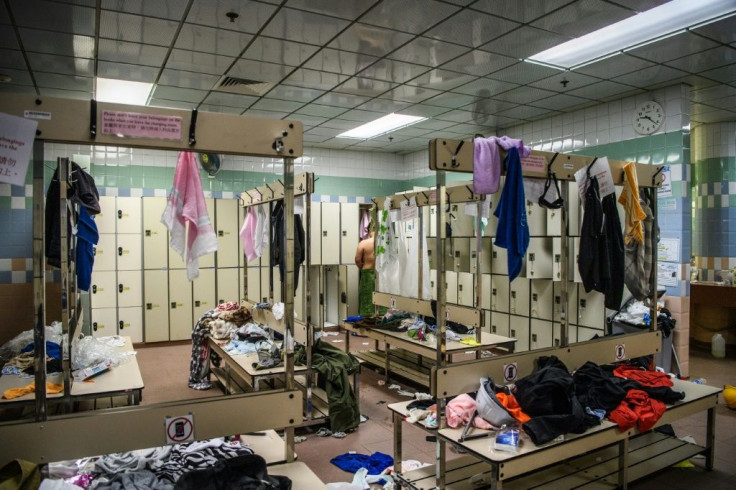
"Every day a new challenge has come up," Michael said, on day 11 of the siege, describing hours spent hunting for food or cleaning products.
He was able to shower in the university's gym, but there were no fresh changes of clothes to be had.
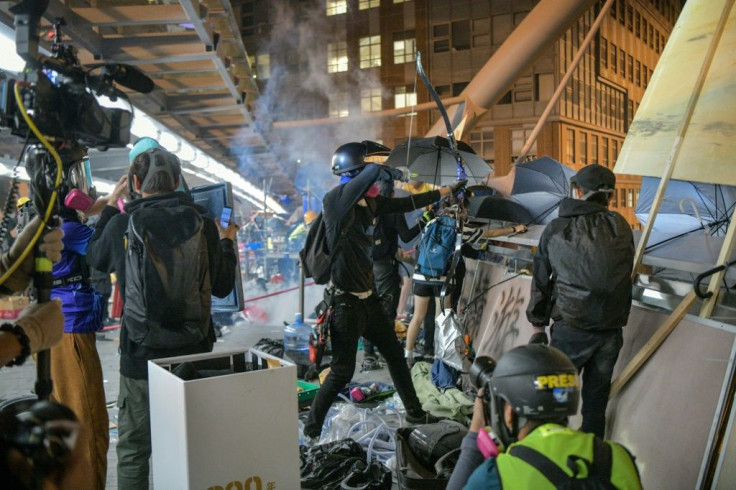
"It is stressful, it is energy-consuming, but also it is a real life challenge that is in front of you," he said. "You have to face it."
By the final days of the siege, only a handful of protesters remained secreted in different parts of the campus, living in fear of a police charge into the university.
While speaking to AFP, an unexpected noise prompted a moment of fear, and the lights in the meeting room were quickly turned off to avoid detection by any arriving police. None came.
Michael offered little biographical detail to explain his entry into a movement that began in opposition to a bill allowing extraditions to mainland China but has broadened into a call to protect Hong Kong's freedoms.
He wouldn't confirm his age, or whether he was a student at the campus.
"We are going to fight until what is wrong is changed to what is right. I don't think these Hong Kongers are ever going to surrender," he said.
He was adamant that he played no part in the violence and he felt police had no right to surround the campus or declare everyone inside rioters.
On a night near the end of the siege Michael led AFP reporters through the maze-like campus, past graffiti painted on a white wall: "What is the point of going to classes when there is no future?"
Inside the library, someone had scrawled "protect the books", and the plea had been heeded. The room was an oasis of order in a campus transformed by chaos.
Michael carefully browsed the shelves, pulling out a book he would read later in between watching live streams online of protests happening outside the campus walls.
In the final two days of the siege, he disappeared altogether, no longer responding to messages and nowhere to be seen on campus.
University authorities announced a sweep of the campus had turned up no more protesters. So where was Michael?
Hours after police said they would be removing their cordons, having collected nearly 4,000 petrol bombs and dozens of bows and arrows from the campus, Michael reemerged, in the form of a brief text message.
"I'm okay and safe," it read.
© Copyright AFP 2024. All rights reserved.







